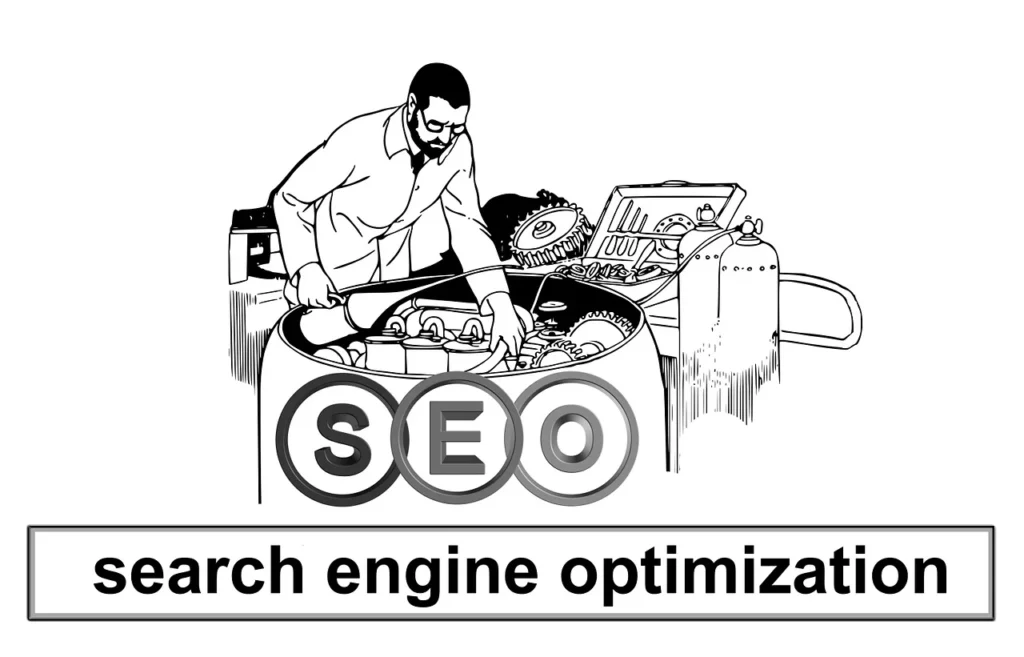Search Engine Optimization (SEO In today’s digital landscape, having a strong online presence is more crucial than ever. Every business, big or small, is vying for attention in the vast sea of search results. But how do you ensure that your website stands out? Enter Search Engine Optimization (SEO), the art and science of enhancing your site to rank higher in search engine results pages (SERPs).
Understanding SEO can feel overwhelming at first, but it doesn’t have to be! With the right strategies and knowledge, anyone can master this essential skill. Whether you’re a seasoned marketer or just starting out on your online journey, these 10 essential tips will help you navigate the world of SEO like a pro. From understanding algorithms to creating high-quality content and leveraging social media—let’s dive into what makes SEO such an indispensable tool for success in today’s digital marketplace!
What is SEO and why is it important?

Search Engine Optimization, commonly known as SEO, is the practice of enhancing your website to improve its visibility on search engines. It involves a combination of techniques and strategies aimed at driving organic traffic from search results.
The importance of SEO cannot be overstated. With millions of websites competing for attention, appearing on the first page can significantly influence your site’s success. Most internet users rarely venture beyond the first few results when searching for information or services.
Moreover, effective SEO builds credibility and trust with your audience. High-ranking sites are often perceived as more reliable sources of information. This trust can translate into higher conversion rates and customer loyalty over time.
In essence, mastering SEO opens doors to new opportunities in reaching potential customers while establishing a strong online presence that grows with your business.
Understanding the basics of search engine algorithms
Search engine algorithms are complex systems that determine how content is ranked in search results. At their core, these algorithms analyze various factors to decide which pages provide the best answers to user queries.
Every search engine has its unique algorithm, but they all aim for one goal: relevance. They assess keyword usage, site speed, and mobile-friendliness among other elements. User behavior also plays a significant role; if people engage with your content, it signals quality.
These algorithms are constantly evolving, influenced by changes in technology and user preferences. Understanding this fluidity is crucial for anyone involved in Search Engine Optimization.
By staying informed about algorithm updates, you can tailor your strategies accordingly. Embracing new trends will help keep your website competitive in an ever-changing digital landscape.
Conducting thorough keyword research

Keyword research is the backbone of effective Search Engine Optimization. It involves discovering what terms your audience is using to search for products or services like yours.
Start by brainstorming a list of potential keywords related to your niche. Think about the questions and phrases your target customers might use. This initial list can serve as a foundation.
Next, utilize tools such as Google Keyword Planner, Ahrefs, or SEMrush. These platforms reveal search volume and competition levels for each keyword. Focus on finding long-tail keywords; they are often less competitive and more specific.
Don’t forget to analyze competitors’ keyword strategies too. Discovering what works for them can guide you in refining your approach.
Keep an eye on trends. User behavior changes over time, so regular updates to your keyword strategy will help maintain relevance in the ever-evolving digital landscape.
Creating high-quality, relevant content
Creating high-quality, relevant content is the backbone of effective search engine optimization. It’s not just about filling pages with keywords; it’s about delivering real value to your audience.
Start by understanding what your target audience seeks. What questions do they have? What problems can you help solve? Tailoring your content to their needs fosters engagement and builds trust.
Use clear language and a conversational tone. Break up text with headings, bullet points, and images to enhance readability. This structure keeps readers on the page longer—a metric that search engines notice.
Don’t shy away from depth either. Comprehensive articles tend to rank better than shorter ones because they provide more information. Regularly updating existing content ensures it remains relevant in a fast-paced digital landscape.
Remember, every piece should align with your brand’s voice and mission while being informative and entertaining at the same time.
Optimizing on-page elements such as title tags, meta descriptions, and URLs

On-page optimization is a critical part of effective Search Engine Optimization. Title tags are your first impression in search results. Craft them to be compelling yet concise, ideally under 60 characters. Use primary keywords; they signal relevance to search engines.
Meta descriptions serve as a brief summary for users. Aim for around 155 characters that include relevant keywords and encourage clicks through engaging language. Think of it as a mini-advertisement for your content.
URLs should be clean and descriptive, reflecting the page’s content clearly. Incorporate keywords where appropriate while keeping them short and readable.
Remember, these elements not only help with rankings but also enhance user experience. When done right, they can significantly improve click-through rates and drive more organic traffic to your site. Keep testing variations to find what resonates best with your audience!
Building backlinks to improve search engine visibility
Backlinks are like votes of confidence for your website. When other reputable sites link to you, search engines see this as an endorsement. It signals that your content is valuable and worth referencing.
To build quality backlinks, focus on creating shareable content. Infographics, in-depth articles, or unique research can attract attention from other creators. They’ll be more likely to link back when they find something compelling.
Don’t underestimate the power of networking. Reach out to industry influencers or bloggers within your niche. A simple email introducing yourself and your work can open doors.
Guest posting is another effective strategy. By contributing expert insights to others’ blogs, you gain exposure while earning a backlink in return.
Remember that not all links carry equal weight; prioritize those from authoritative domains over lesser-known sites for maximum impact on your SEO efforts.
Utilizing social media for SEO purposes

Social media plays a crucial role in enhancing your Search Engine Optimization strategy. It’s not just about posting content; it’s about creating engagement. When users share your posts, they amplify your reach and drive organic traffic to your website.
Each social media platform offers unique opportunities to connect with your audience. Tailor your messages for each channel while keeping an eye on trending topics that resonate with potential visitors.
Encourage user-generated content by inviting followers to share their experiences related to your brand or industry. This creates authentic backlinks as others link back to you.
Don’t forget the importance of consistency! Regular updates keep you relevant and visible in both search engines and social feeds. The more active you are, the more likely people will engage with your brand, boosting its authority over time.
Tracking and analyzing website traffic and performance

Tracking website traffic is essential for any SEO strategy. Analytics tools like Google Analytics provide insights into user behavior, helping you understand who visits your site and what they engage with.
Monitoring metrics such as bounce rate, session duration, and page views reveals how effectively your content meets visitor needs. If users quickly leave the site, it might indicate a need for improvement in either content or usability.
Performance analysis goes beyond just numbers. It helps identify which channels drive the most traffic—be it organic search, social media, or referrals. Understanding these patterns allows for better allocation of resources to maximize reach.
Regularly reviewing this data keeps you informed about trends over time. Adapting strategies based on performance ensures that you’re not only attracting visitors but retaining them as well. This ongoing process lays the foundation for continuous improvement in your Search Engine Optimization efforts.
Staying up-to-date with algorithm changes and adapting strategies accordingly
The world of SEO is ever-evolving. Search engines frequently update their algorithms, which can significantly impact your site’s visibility. Staying informed about these changes is crucial for maintaining your online presence.
Subscribe to industry newsletters and follow reputable SEO blogs. Participate in webinars or conferences to learn directly from experts. These resources provide valuable insights into emerging trends and best practices.
Adapting strategies based on algorithm updates ensures that you stay ahead of the competition. Regularly audit your website’s performance and adjust tactics as needed. Flexibility in your approach will help keep your content relevant and search-engine friendly.
Embrace change rather than resist it. By continuously learning and adjusting, you’ll enhance your skills in search engine optimization while maximizing the potential of your site’s traffic and engagement over time.






